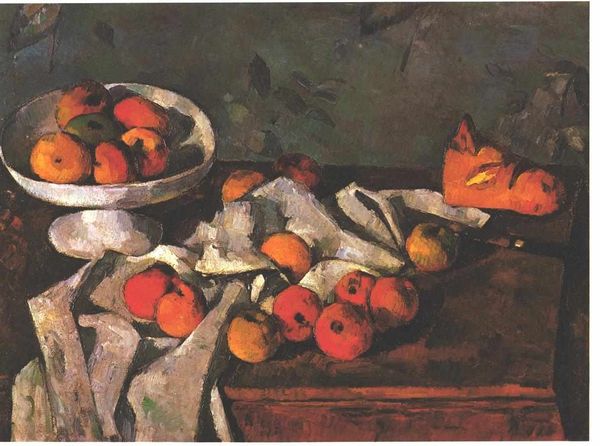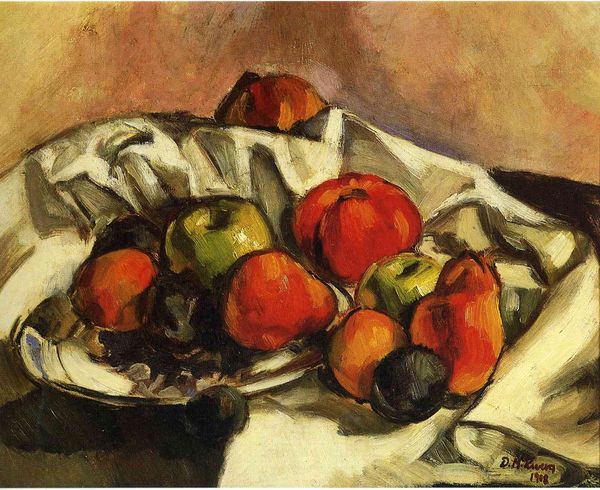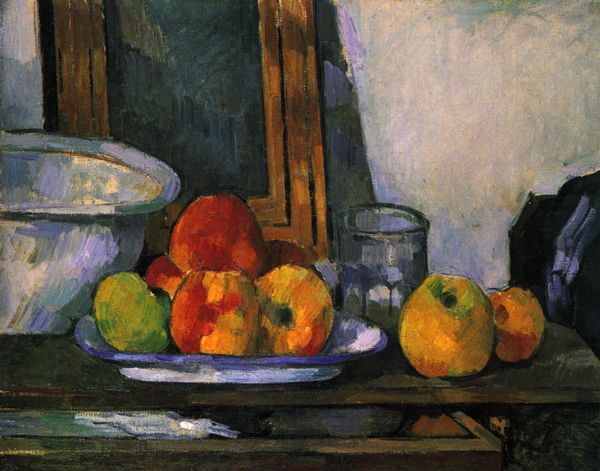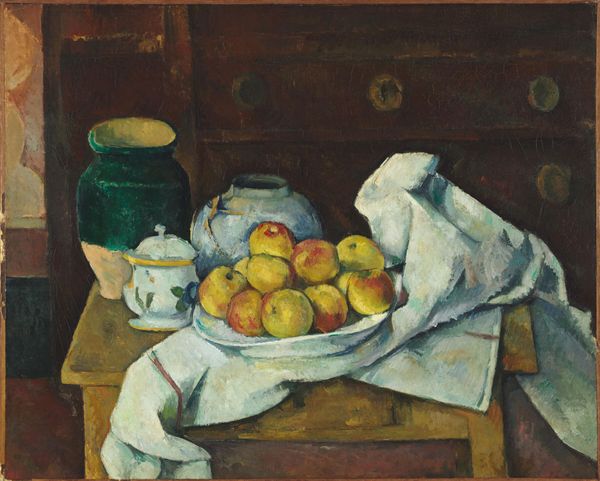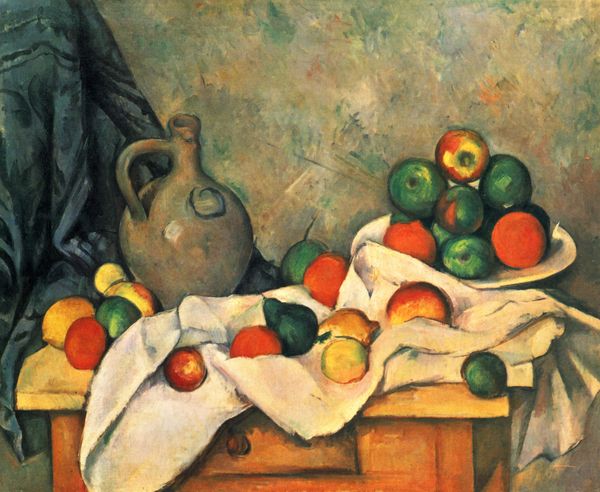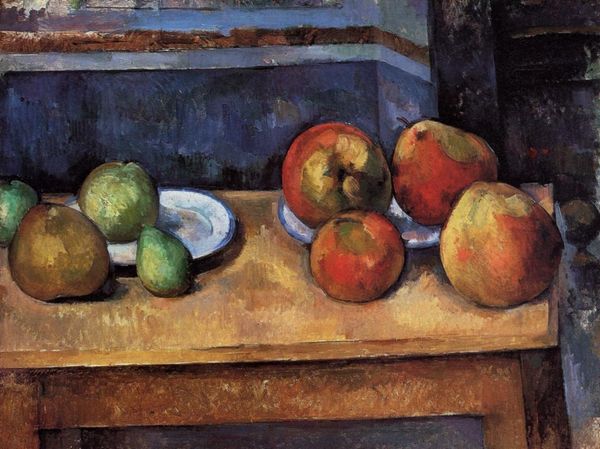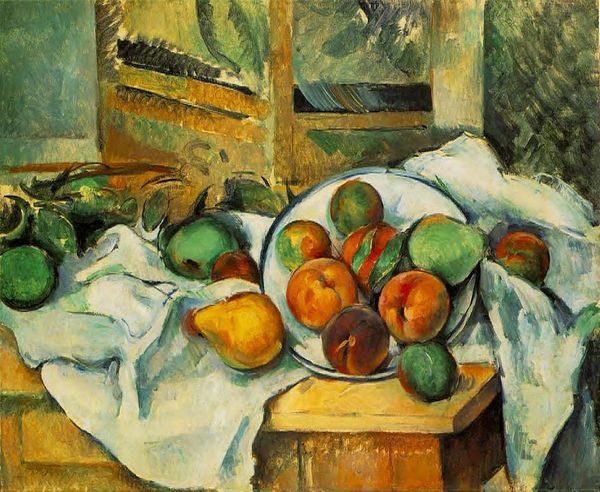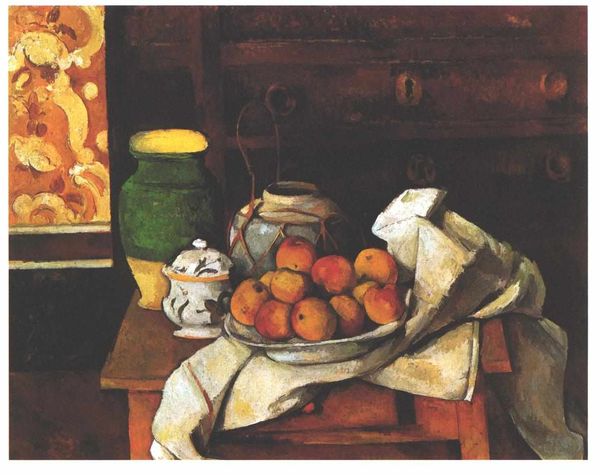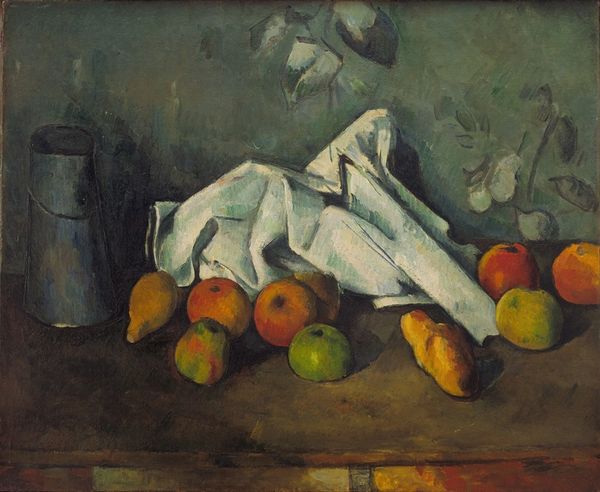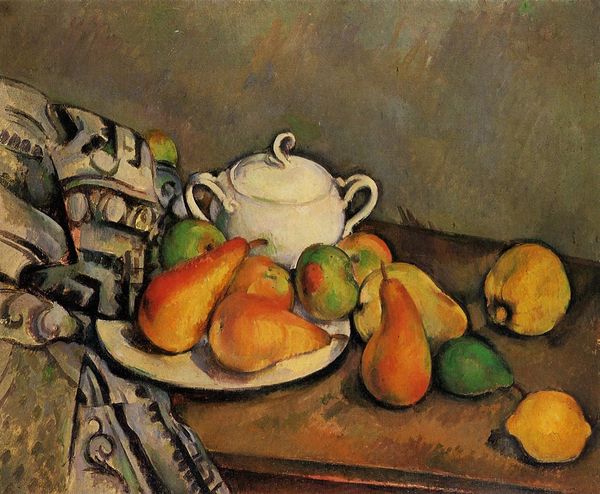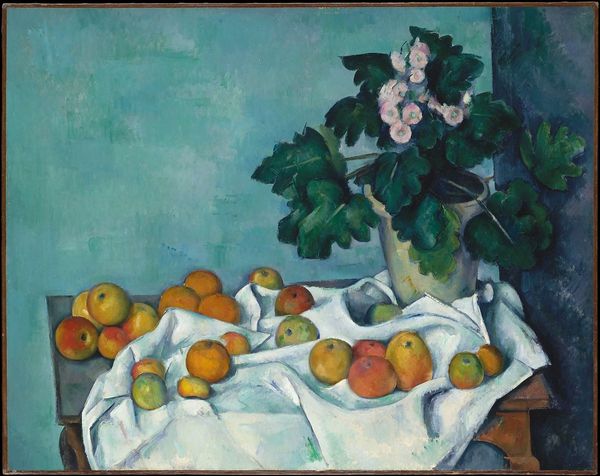
painting, oil-paint, photography, impasto
#
still-life
#
painting
#
oil-paint
#
landscape
#
photography
#
oil painting
#
impasto
#
post-impressionism
#
watercolor
#
realism
Copyright: Public domain
Curator: This still life from 1880 offers a visually arresting composition. The carefully arranged fruit and simple domestic objects create a sense of both stability and underlying tension. Editor: I am immediately struck by the darkness. It's not grim, but a thoughtful solemnity—especially in contrast to the radiant fruit and gentle folds of the linen. Curator: Absolutely, the strategic use of light and shadow generates this dynamic. Now, let us address the painter—Paul Cézanne. He disrupts traditional perspective. Note how he flattens the pictorial space by building form through color rather than relying on linear perspective. Editor: Yes, he's not simply capturing reality but constructing his version of it. You know, during the 1880s, French society witnessed unprecedented growth, which made such images so popular—showcasing the everyday accessible luxury of bourgeoise society through deceptively simple items. What appears to be a standard setup hides greater sociopolitical tensions within. Curator: Indeed. There's a departure here from objective representation. Note his famous "passage" technique: areas of flat color acting almost as facets, modulating the shapes. Look at the bowl for instance, notice the distorted rendering. It’s revolutionary. He encourages us to contemplate how we truly perceive objects. Editor: The fruit appear more weighty, solid and substantial. It echoes the changing public attitude in France as common man asserted more public space and power. Did this artistic shift empower burgeoning segments of the population and fuel the revolutionary fever pitch that began sweeping through France. Curator: Certainly, Cézanne sought truth, not mere optical illusion, that became a signifier of changing times. A powerful claim embedded in everyday objects. This, perhaps, paved the way for further movements like Cubism, where artists fully embraced fractured perspectives and non-representational form. Editor: Cézanne transforms humble subjects into profound statements, mirroring the shifts within French society and foreshadowing a future of artistic innovation, offering his viewer both intimacy and disruption. It seems apt, then, to end by suggesting one reconsider these notions again within the contemporary age.
Comments
No comments
Be the first to comment and join the conversation on the ultimate creative platform.
